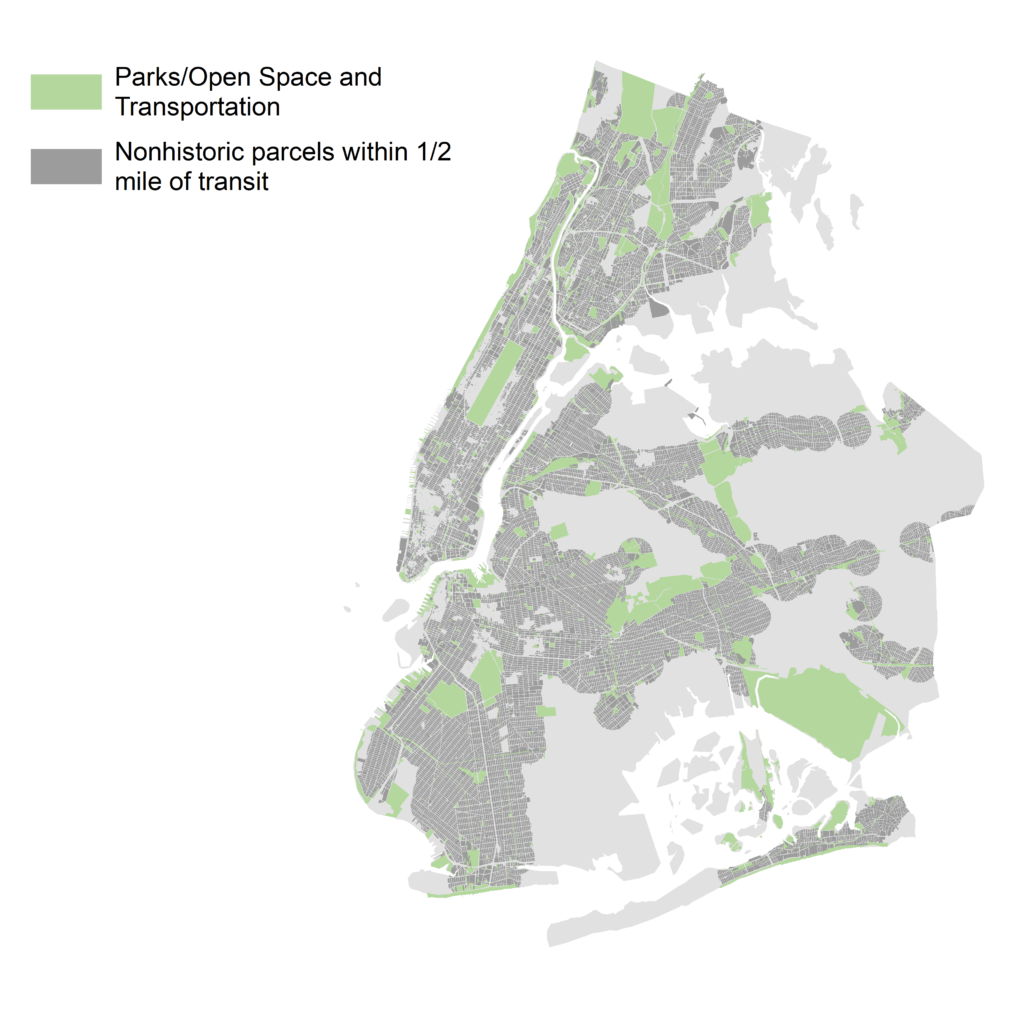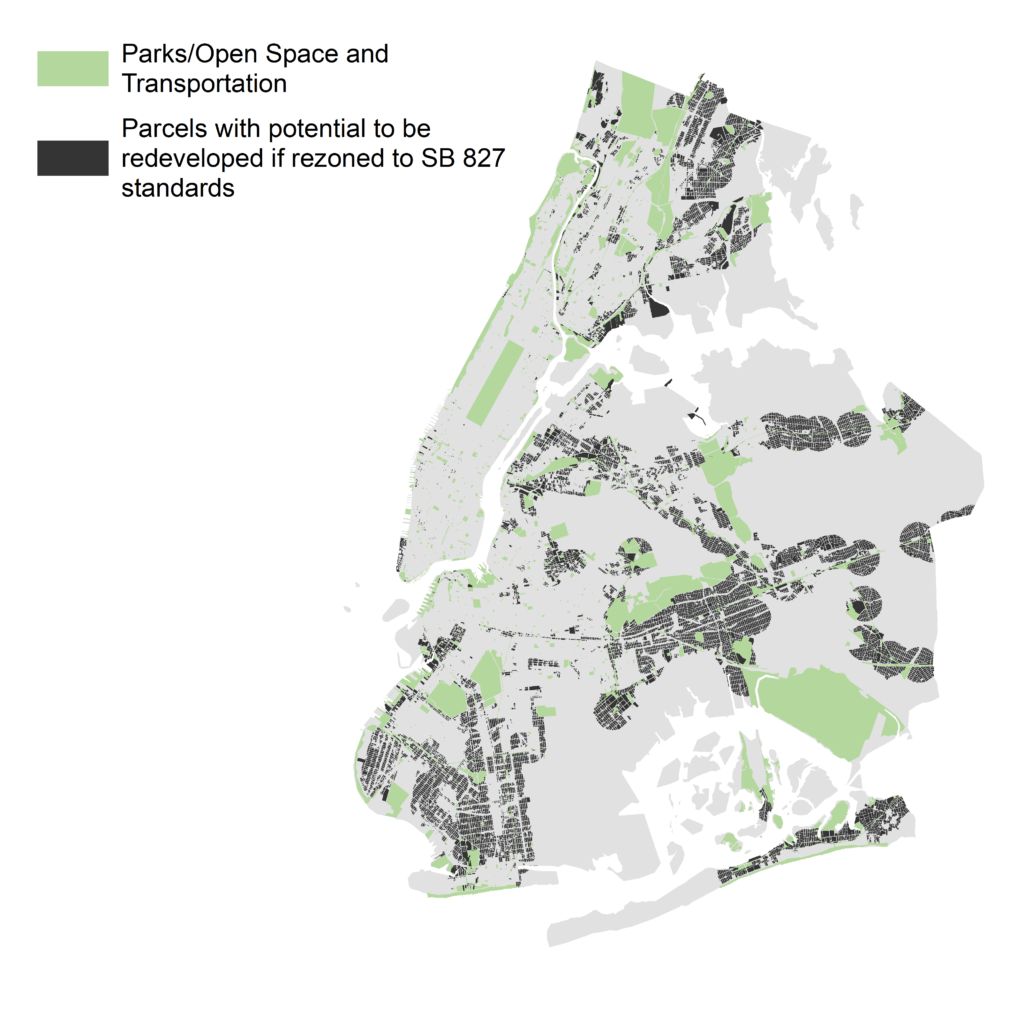We tend to think of New York City as a transit-oriented city. But is it really?
A recent bill in California that RPA has been following – SB 827 - would propose minimum transit density standards not just in major cities, but statewide: 8-story buildings on wide streets within a 5-minute walk of mass transit, 4- or 5-story buildings on narrower streets or those within a 5-10 minute walk. It didn’t take long before people starting figuring out exactly where this might apply in places like Los Angeles and the Bay Area.
We decided to see what would happen if similar regulations were applied to New York City. What we found was surprising - New York’s zoning isn’t as transit-friendly as you might think. Even though you would think that given the fierce need for housing here, and the premium most people are willing to pay to live near a subway, that the City would promote the creation of at least slightly larger buildings near transit. But, our research found that there are still lots of places in the City that are just not zoned for the density that their transit proximity might suggest.
First, we had to figure out which parts of the city an SB 827-like provision would cover in New York City. SB 827 would apply to parcels within ½ mile of “a major transit stop” or ¼ mile of a “high-quality transit corridor.” And the bill defines a “high-quality transit corridor” as one with rush-hour bus service every 15 minutes – a definition which would cover almost all of the 5 boroughs. So we decided we’d focus on any place that was within ½ mile of “major-transit stops,” meaning subway or commuter rail, and we subtracted Landmarks and Historic Districts.

All NYC parcels within one-half mile of a subway or commuter rail stop
Next we narrowed our search to only parcels where either the allowed zoning or the existing building is less than what would be allowed if California’s SB 827 were applied (1).

NYC parcels within one-half mile of a subway or commuter rail stop and underzoned by SB 827 definitions
While almost all of Manhattan and a good amount of the Bronx disappear, a full 85% of parcels in New York City remain – including almost all of the transit-accessible areas in Brooklyn and Queens.
This doesn’t mean hug swaths of Brooklyn and Queens would be likely to get redeveloped. After all, SB 827 only allows 4 or 5 story buildings on residential streets, so a developer probably isn’t going to spend the time and money to tear down a three-story building to build a four-story in its place. So our final filter was to find only areas where it might be feasible to build something larger than is currently allowed or already exists. For this we looked at places where a building twice as large would be allowed under the standards of the California bill.

Potential parcels for redevelopment with SB 827-like zoning
These are the places where we are really not utilizing our transit infrastructure. Places like Woodside and Windsor Terrace, with 20-minute subway commutes to the largest job center in the country, are zoned for less than half the density that would be allowed on transit routes through the entire state of California under their proposed Transit-Oriented Development bill. There are even places – like Forest Hills North and parts of Midwood – which currently only allow large single family McMansion development despite being within walking distance of express subway stops like 71st-Street Continental or Newkirk Plaza.
Not allowing more homes where they make sense – near jobs and transit – means we either have to build them where they don’t make sense, or not build them at all. Either way, it leads to worse commutes, more crowding, and a more expensive and less livable city.
(1) For this we looked at the corresponding allowed or built Floor Area Ratio – SB 827 equates a 4.5 FAR for the 8-story buildings, 3.25 for the 5 story buildings, and 2.5 for the 4-story buildings.

